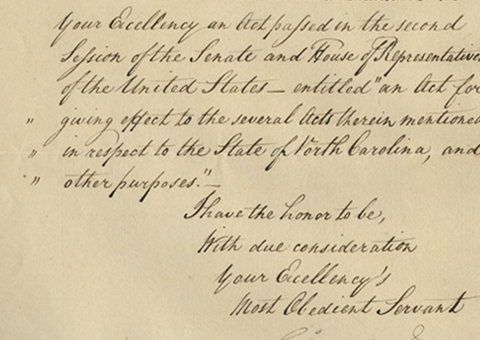The U.S. Government Buys Muskets from Eli Whitney

This transaction established interchangeable parts as a manufacturing standard.
Whitney is credited with creating the first cotton gin, for which he received a patent in 1794. The gin was a mechanical device which removed the seeds from cotton, a process which until that time had been extremely labor-intensive.
This invention contributed to the economic development of the southern states as a...
Whitney is credited with creating the first cotton gin, for which he received a patent in 1794. The gin was a mechanical device which removed the seeds from cotton, a process which until that time had been extremely labor-intensive.
This invention contributed to the economic development of the southern states as a prime cotton growing area and therefore changed history. It made Whitney famous, but mismanagement resulted in Whitney receiving little financial compensation for the historic invention.
In 1798, Congress voted $800,000 for the purchase of cannon and small arms. The army expressed an interest in guns that could be repaired easily after a battle to prepare for the next day’s fighting. The then-standard manufacturing system used one skilled maker to produce all the parts for an individual musket by hand, one at a time, a process that made quick repair almost impossible.
Responding to this need and seeing in it an opportunity, Whitney invented what was eventually termed the "American System" the use of powered, specially designed machines to make interchangeable parts, and assembling the final product from those parts.
With unskilled labor and machines making the parts, his concept would also enable him to increase production and do it at a reduced cost. Whitney was successful and won a contract from the federal government for the production of 10,000 muskets.
He needed several years to design the machines, build the plant, train the workers, and produce the muskets. In the interim, in January 1801, he went to Washington where he made an unforgettable demonstration before government officials. He spread out on a table many parts of gunlocks, then randomly picked up pieces to assemble a lock. He then disassembled it and invited his astonished observers to emulate him. In 1809 he finally fulfilled his first major government contract. In 1812, with the outbreak of war, he was awarded a contract to manufacture 15,000 muskets, and a few other government contracts soon followed.
Whitney’s methods, along with the U.S. Government’s approval and funding of them, constituted a watershed, as they caught the attention of businessmen throughout the country. Gradually the American System was applied to most types of manufacturing, permitting manufacturing in mass for the first time and leading to a consumer-based economy. Thus, these transactions of Whitney with the United States constitute a virtual birth certificate of modern American industry.
This letter, in which Whitney invoices the Secretary of War for a shipment of muskets delivered to the U.S. War Department, documents one of these original, epochal transactions.
Autograph Letter Signed, New Haven, July 16, 1823 to Secretary of War John C. Calhoun.
“Vouchers for a further delivery of 500 muskets will be found herewith enclosed, whereupon be pleased to direct a remittance of six thousand five hundred dollars to be made to…Eli Whitney.” The vouchers are not present. Whitney’s letters are extremely uncommon, this being just the second we have ever had.

Frame, Display, Preserve
Each frame is custom constructed, using only proper museum archival materials. This includes:The finest frames, tailored to match the document you have chosen. These can period style, antiqued, gilded, wood, etc. Fabric mats, including silk and satin, as well as museum mat board with hand painted bevels. Attachment of the document to the matting to ensure its protection. This "hinging" is done according to archival standards. Protective "glass," or Tru Vue Optium Acrylic glazing, which is shatter resistant, 99% UV protective, and anti-reflective. You benefit from our decades of experience in designing and creating beautiful, compelling, and protective framed historical documents.
Learn more about our Framing Services







































































































